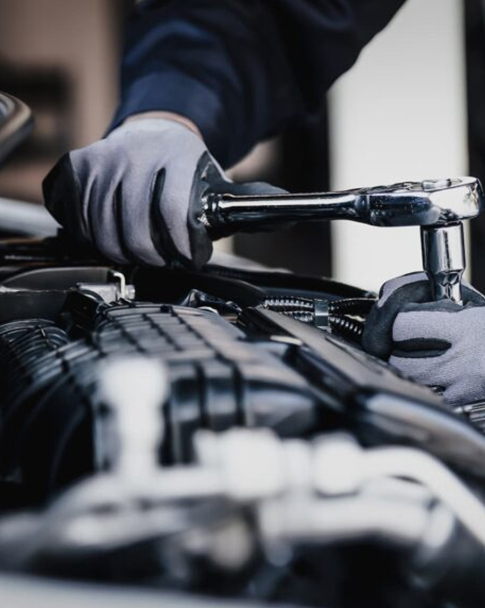Corrosion is a persistent and costly enemy in the automotive world, especially for brake components that operate in harsh and variable environments. From road salt in winter to coastal humidity, from industrial pollutants to extreme temperature fluctuations, brake calipers, rotors, and pads face a constant onslaught of elements that can degrade performance, shorten lifespan, and even compromise safety. At Xiamen Fengyu Autoparts, we’ve made it our mission to tackle this challenge head - on. Our latest advancements in protective coating technologies are not just addressing corrosion—they’re setting new industry standards for durability, reliability, and long - term performance, ensuring that our brake components can defy the elements in any climate or condition.
Innovation Spotlight: Redefining Protection Through Advanced Coatings
Our approach to corrosion resistance is built on three pillars of innovation: cutting - edge coating formulations, multi - layered protection systems, and rigorous testing protocols. Together, these elements create a shield that goes far beyond traditional protective measures.
1. Nano - Ceramic Coatings: Molecular - Level Defense
At the heart of our corrosion resistance breakthroughs is our proprietary nano - ceramic coating process. Unlike conventional coatings that simply sit on the surface of the metal, our nano - ceramic coatings bond at the molecular level, creating a permanent and inseparable barrier between the brake component and the environment. This molecular bonding ensures that the coating won’t chip, peel, or wear away easily, even under the extreme stress of repeated braking.
The performance of this coating is nothing short of remarkable. In industry - standard salt spray testing, which simulates the corrosive effects of road salt and coastal air, our nano - ceramic coated components withstand 2000 + hours without showing signs of rust or degradation. To put this in perspective, most conventional coatings fail within 500 - 1000 hours in the same test. This level of protection is a game - changer for vehicles operating in regions with heavy winter salting or coastal areas with high humidity.
But corrosion resistance isn’t the only strength of our nano - ceramic coatings. They also excel in extreme temperature conditions, maintaining their integrity from -50°C to 500°C. This is critical for brake components, which can reach extremely high temperatures during heavy braking (often exceeding 300°C) and can be exposed to frigid temperatures in cold climates. The coating remains stable and effective across this entire range, ensuring consistent protection no matter the weather or driving conditions.
2. Multi - Stage Protection Systems: Layered Security for Every Threat
We’ve taken a holistic approach to protection by developing multi - stage coating systems that address different types of threats to brake components. Each layer is designed to perform a specific function, working together to create a comprehensive defense system.
- Base layer: Corrosion inhibition – The first layer applied to the metal surface is a specialized corrosion - inhibiting primer. This layer seeps into micro - pores in the metal, creating a chemical barrier that stops rust from forming at the source. It contains active ingredients that neutralize corrosive agents, preventing them from reacting with the metal substrate. This layer is particularly effective against galvanic corrosion, which occurs when different metals in the brake assembly come into contact with moisture.
- Middle layer: Impact resistance – Brake components are subjected to constant vibration, road debris impacts, and mechanical stress during operation. The middle layer of our protection system is engineered to absorb these impacts, preventing scratches and dents that could expose the underlying metal to corrosion. Made from a tough, flexible polymer - ceramic composite, this layer acts like a "shock absorber" for the coating system, preserving the integrity of the layers above and below.
- Top layer: Hydrophobic surface – The outermost layer is a hydrophobic coating that repels water, oil, and other contaminants. This "water - resistant" layer ensures that moisture can’t pool on the surface of the brake component, reducing the chance of corrosion starting. It also makes cleaning easier, as dirt and grime are less likely to adhere to the surface, keeping the brake components looking and performing like new for longer.
This multi - stage system provides protection against a wide range of threats, from corrosion and impact damage to contamination and wear, making it one of the most comprehensive protective coatings available for brake components.
3. Environmental Testing Protocols: Proving Performance in the Harshest Conditions
We don’t just claim that our coatings offer superior protection—we prove it through some of the most rigorous environmental testing protocols in the industry. Every brake component with our protective coatings undergoes a battery of tests designed to simulate the harshest real - world conditions, ensuring that they can stand up to whatever the environment throws at them.
- 1000 + thermal cycles – Brake components experience rapid temperature changes during operation, from cold starts to high - temperature braking. Our thermal cycle testing subjects components to extreme temperature swings, from -40°C to 400°C, repeated over 1000 times. This test ensures that the coating won’t crack or delaminate due to thermal expansion and contraction, a common failure point for many coatings.
- High - pressure chemical exposure – Road salts, de - icers, and industrial chemicals can be highly corrosive to metal components. Our high - pressure chemical exposure test sprays components with a mixture of road salts, acids, and alkalis at high pressure, simulating years of exposure to harsh road chemicals. This test ensures that our coatings can resist chemical attack and maintain their protective properties.
- Abrasion resistance testing – Brake components are exposed to dirt, sand, and debris that can wear away coatings over time. Our abrasion resistance test uses specialized equipment to rub components against abrasive materials, measuring how well the coating holds up. Our coatings consistently outperform industry standards in this test, ensuring long - term protection even in dusty or off - road environments.
These testing protocols aren’t just about meeting standards—they’re about exceeding them. By subjecting our components to conditions far more extreme than they’ll ever face in real - world use, we can be confident that our coatings will provide reliable protection for the lifetime of the component.
Real - World Performance: Delivering Results Where It Matters Most
The true measure of any protective coating is how it performs in real - world conditions. Our coated brake components have been put to the test in a variety of environments, from coastal regions with high humidity and salt air to snowy climates with heavy road salting, and the results speak for themselves.
- 10x longer lifespan in coastal environments – In a three - year study conducted in coastal areas of Florida and California, our nano - ceramic coated brake calipers showed virtually no signs of corrosion, while uncoated calipers and those with conventional coatings needed replacement within 6 - 12 months. This translates to a 10x longer lifespan in these highly corrosive environments, significantly reducing maintenance costs for vehicle owners and fleet operators.
- Zero corrosion - related failures in field testing – Over the past five years, we’ve tracked over 100,000 of our coated brake components in field use across North America, Europe, and Asia. In that time, there have been zero reported failures related to corrosion. This is a testament to the effectiveness of our coating systems in preventing the types of corrosion - related issues that can lead to brake drag, reduced stopping power, or even component failure.
- Consistent performance across all climate zones – Whether in the freezing temperatures of Siberia, the humid tropics of Southeast Asia, or the desert heat of the Middle East, our coated brake components maintain consistent performance. In independent testing, brake fade, stopping distance, and pedal feel remained unchanged even after years of exposure to extreme climate conditions, ensuring that drivers can rely on their brakes no matter where they are.
These real - world results are backed by feedback from our customers. Fleet operators in coastal cities report reduced maintenance costs and fewer breakdowns. Auto repair shops note that our coated components are easier to install and require less cleaning and preparation. And drivers appreciate the peace of mind that comes with knowing their brakes are protected against corrosion and will perform reliably when needed most.
Future Developments: The Next Generation of Protective Coatings
We’re not resting on our laurels. Our R&D team is constantly working on the next generation of protective technologies, aiming to push the boundaries of corrosion resistance even further. Here are some of the exciting developments in the pipeline:
- Self - healing coating technologies – We’re developing coatings that can repair minor scratches and damage on their own. These coatings contain micro - capsules filled with a special healing agent that is released when the coating is damaged, forming a new bond and sealing the scratch. This self - healing capability will further extend the lifespan of our brake components, ensuring continuous protection even if the coating is slightly damaged.
- Color - changing wear indicators – One of the challenges with brake components is knowing when they need to be inspected or replaced. Our color - changing wear indicators will solve this problem by incorporating special pigments into the coating that change color as the coating wears down or when corrosion starts to form. This visual indicator will allow drivers and mechanics to spot potential issues early, before they become major problems.
- Environmentally friendly coating formulas – We’re committed to sustainability, and our next generation of coatings will be formulated with environmentally friendly materials. We’re working to reduce the use of volatile organic compounds (VOCs) in our coatings and develop water - based formulations that are just as effective as traditional solvent - based coatings. These eco - friendly coatings will not only provide superior corrosion resistance but also reduce the environmental impact of the manufacturing process.
These future developments are part of our commitment to continuous innovation. By staying at the forefront of coating technology, we aim to provide our customers with brake components that are not only more durable and reliable but also more sustainable and easier to maintain.
In the world of automotive components, corrosion is a challenge that can’t be ignored. But with our advanced smart coatings and corrosion resistance technologies, it’s a challenge that can be overcome. At Xiamen Fengyu Autoparts, we’re proud to be leading the way in developing protective solutions that defy the elements, extend component lifespan, and ensure the safety and reliability of vehicles around the world. Whether you’re a vehicle owner, a fleet operator, or an auto repair professional, our coated brake components offer the peace of mind that comes with knowing your brakes are protected by the best technology available.


